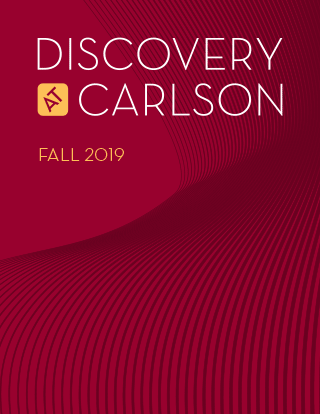
Associate Professor Evan Rawley on the Cost of Streamlining a Business
Friday, November 15, 2019
When a multi-business company underperforms, conventional wisdom says they should streamline operations by reducing the number of businesses they operate and focus on “core competencies.” The idea is that streamlining will allow them to become more efficient and, in turn, save money.
But research by Associate Professor Evan Rawley shows that when businesses streamline their operations, they may face both short-term and ongoing costs that could render them less efficient after the fact.
“When a firm is struggling, a manager’s first thought is often to outsource and eliminate what is viewed as extraneous so they can focus on what they do best,” explains Rawley. “People think that makes sense all the time, but our research shows that just isn’t the case.”
Pinpointing the costs of closing a line of business
It can be difficult to empirically test the costs of business scope reduction because of selection effects—a business that streamlines its operations is likely doing so because managers decided the benefits outweigh the costs. Teasing out the costs incurred because of reorganization can, therefore, be difficult.
To overcome the empirical challenge of measuring the costs of scope reduction, Rawley and his fellow researchers studied hedge funds that were exogenously driven to close during the Great Recession due to performance shock. What they found was that firms that closed funds not only faced transitory costs (e.g. managerial time diverted to restructuring the organization due to closure) but also persistent “synergy destruction”—when a hedge fund closed, other funds in the firm performed worse. And, funds more closely related to the shuttered unit saw an even larger decrease in performance. While firms typically adapted to the change eventually, those closely related funds experienced a more persistent decline.
“Hedge funds are a simple business,” explains Rawley. “And yet, our research revealed costs associated with closing funds. Therefore, we should find stronger effects in contexts where operational complexity is higher.”
When refocusing impacts the bottom line
One instance of larger and more complex synergy lost was during the restructuring of General Motors after the company went bankrupt. The U.S. Treasury Department, which invested in GM to prevent its collapse, forced it to sell off its profitable financing wing, General Motors Acceptance Corporation (GMAC, now called Ally Financial).
The idea was to focus GM’s operations on its core competency of building automobiles. But GMAC actually played a crucial role at GM: It provided financing to customers in a way that smoothed production cycles, made up for production mistakes, and helped improve efficiency.
The loss of GMAC caused both transitory and synergistic costs. And, to add insult to injury, the company needed to get back into financing by launching GM Financial, which itself added more costs.
“It’s actually a huge benefit for GM’s production side to have a captive finance company that makes decisions that might be ‘bad’ financial decisions but are good for the production side of business,” says Rawley.
Breaking apart businesses isn't always the answer
So where did the conventional wisdom that “streamlining equals efficiency” come from? Likely a relic of another era, explains Rawley.
Historically, there were many conglomerates around— huge companies that had many unrelated businesses with a corporate office acting as something of an internal capital market. “Those businesses tended to be inefficient, because the allocation of capital within a firm is more bureaucratic than it would be out in the free market.”
Today, few conglomerates exist in the U.S.—most were broken up by corporate raiders in the 1980s through leveraged buyouts. “People got the idea that the problem was having a business with too many parts and that getting rid of the parts made a business better off,” says Rawley. “But really most businesses that are diversified are not conglomerates with unrelated businesses stuck together; instead, they’re businesses where the scope of the firm has expanded a little bit over time in a pretty sensible way.”
While conglomerates’ inefficiencies made them ripe for breaking apart, there’s no one-size-fits-all answer for today’s multi-business companies. Closing or spinning off part of the organization might make sense, but this research shows that the costs are real—and often persistent.
